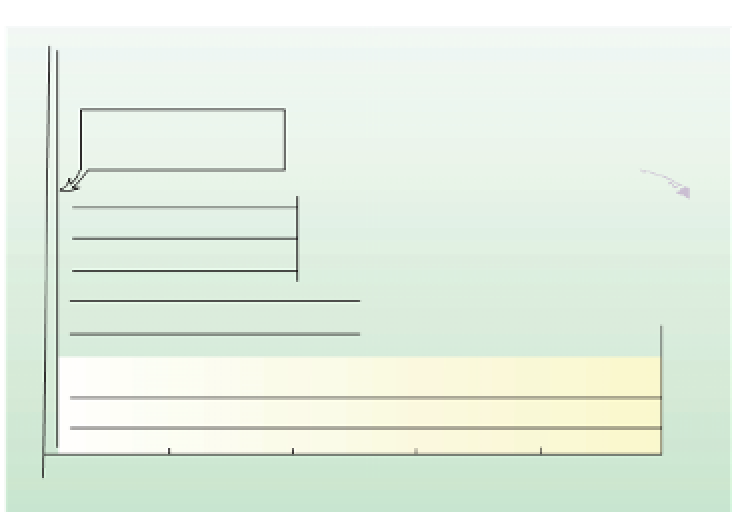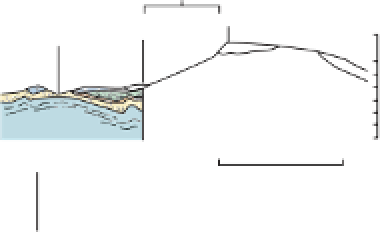Geology Reference
In-Depth Information
Llanganuco Section
Cordillera Blanca Fault
Huascaran
cataclasite
+
recrystallisation of
fault gauge
pressure solution
km
Rio santa
Yungay
Ignimbrites
Ts-yu
6
Calipuy
K
2
4
s/c fabric, ribbon quartz
mylonites
joint increase. sw dip
muscovite incoming
biotite alignment
2
Js -
chic
Chicama
0
0
km
10
schleiren megacryst alignment
flow fabric
1
km
3
4
5
Llanganuco Section
Figure 7.13
Summary of fabric and structural development in the Miocene
Cordillera Blanca Batholith, Peru. The core of the batholith is relatively unde-
formed, but traversing westwards towards a major fault zone reveals a sequence
of magmatic foliations (layering and schlieren) overprinted progressively by
shear zones, mylonites and cataclasite.
7.5.1 Layering
Igneous layering similar to that associated with mafic - ultramafic magmas (e.g.
Chapter 8), but involving different minerals, is also observed in calc-alkaline
plutons (Figure 7.16). Small-scale lamination (2 - 3 cm band width) may be
observed, in which the mineralogical distinction between more-mafic and more-
felsic bands is clear cut. Disruption of early-formed mafic layers while the
felsic magma remains mobile, perhaps as a crystal mush, produces rounded
mafic
autoliths
or elongate
schlieren
. Schlieren are anomalous concentrations
of mafic minerals (biotite, for example) and are commonly interpreted as forming
by one of four mechanisms: (i) crystal sorting during magma flow, (ii) shear-
ing of magmatic enclaves (see Chapter 9), (iii) crystal settling (iv) late-stage
hydrothermal alteration.
The development of crystal mushes during incipient crystallisation of magmas
may be associated with the extraction of residual liquid from the consolidat-
ing mush either by gravitational effects related to temperature or composition
(buoyancy or compositional convection) or by deformation and shear-enhanced
ditatancy of the granular mush framework. The
efficiency
of these processes is










































































